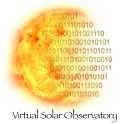| | 1 | 'New Data Provider Questionaire' |
| | 2 | |
| | 3 | Please see NewDataProvider for more information about becoming a VSO Data Provider, and what to do with this questionaire once you have filled it out, or for information about assistance in filling it out. |
| | 4 | |
| | 5 | -------- |
| | 6 | |
| | 7 | 1. Under what name is your organization commonly refered to? |
| | 8 | |
| | 9 | 2. Is there is a standard abbreviation or acronym for your organization? |
| | 10 | |
| | 11 | 3. What data sets are you sharing? |
| | 12 | |
| | 13 | Please describe each data set in terms of: |
| | 14 | |
| | 15 | a. Instrument & Detector |
| | 16 | |
| | 17 | i. Observatory Name |
| | 18 | |
| | 19 | ii. Observatory Abbreviation |
| | 20 | |
| | 21 | iii. Instrument Name |
| | 22 | |
| | 23 | iv. Instrument Abbreviation |
| | 24 | |
| | 25 | v. Detector or other Sub-instrument Name |
| | 26 | |
| | 27 | vi. Detector Abbreviation |
| | 28 | |
| | 29 | b. Physical Observable * |
| | 30 | (see http://vso.stanford.edu/datamodel/v18.html#obsrvbl ) |
| | 31 | |
| | 32 | c. Time range |
| | 33 | |
| | 34 | i. earliest record |
| | 35 | |
| | 36 | ii. most recent record, if not actively adding info |
| | 37 | |
| | 38 | d. Observed region |
| | 39 | (full disk, solar limb, corona, etc.) |
| | 40 | |
| | 41 | e. Spectral Range |
| | 42 | (if applicable) |
| | 43 | |
| | 44 | 4. How is the data being made available? |
| | 45 | |
| | 46 | a. Request mechanism (direct URL, email, web-based form, etc) |
| | 47 | |
| | 48 | b. Packaging (FITS, CDF, JPG) |
| | 49 | |
| | 50 | c. Delivery Protocol (HTTP, FTP, etc.) |
| | 51 | |
| | 52 | 5. If the data products aren't accessible directly, what is the standard turnaround between data request, and it becoming available? |
| | 53 | |
| | 54 | 6. If you have a catalog of metadata: |
| | 55 | |
| | 56 | a. Is it currently in a database? (if so, what vendor?) |
| | 57 | |
| | 58 | b. What metadata is available in the database? |
| | 59 | |
| | 60 | 7. If you don't have a catalog, please describe how the data is organized. |
| | 61 | |
| | 62 | 8. Is there anything else about the data that might be important for people to do science with it? |
| | 63 | (calibration info, details about the file formatting, etc.) |
